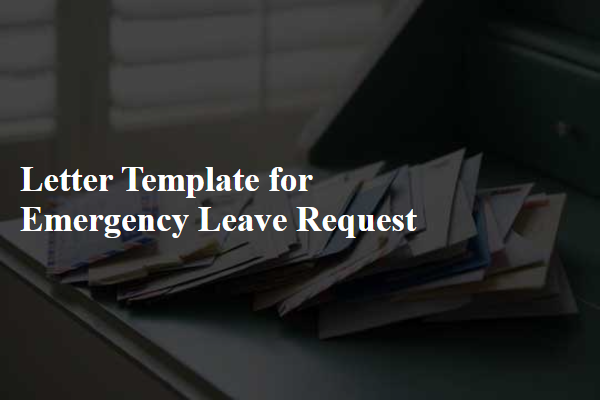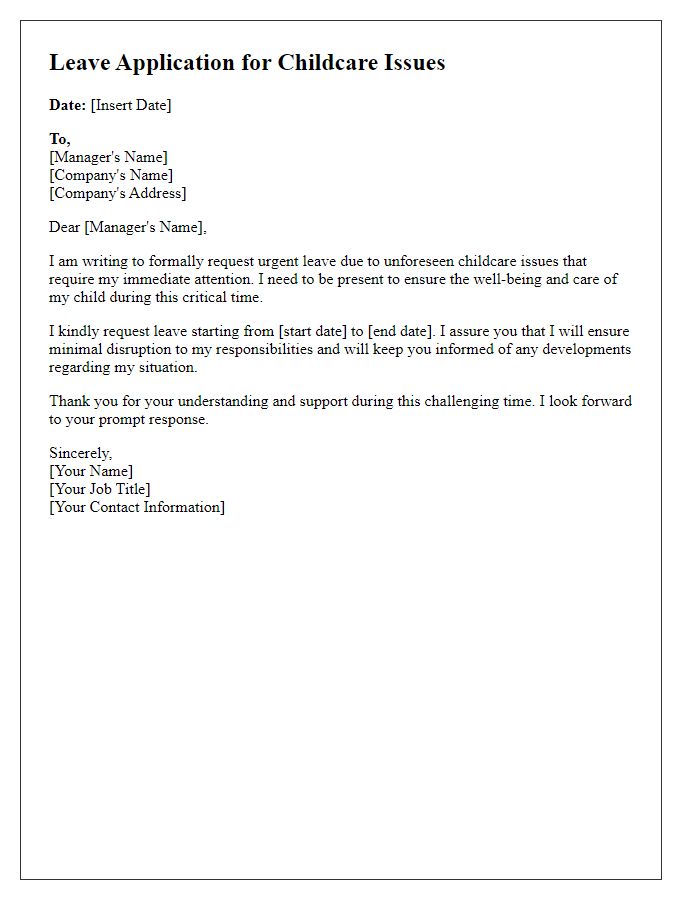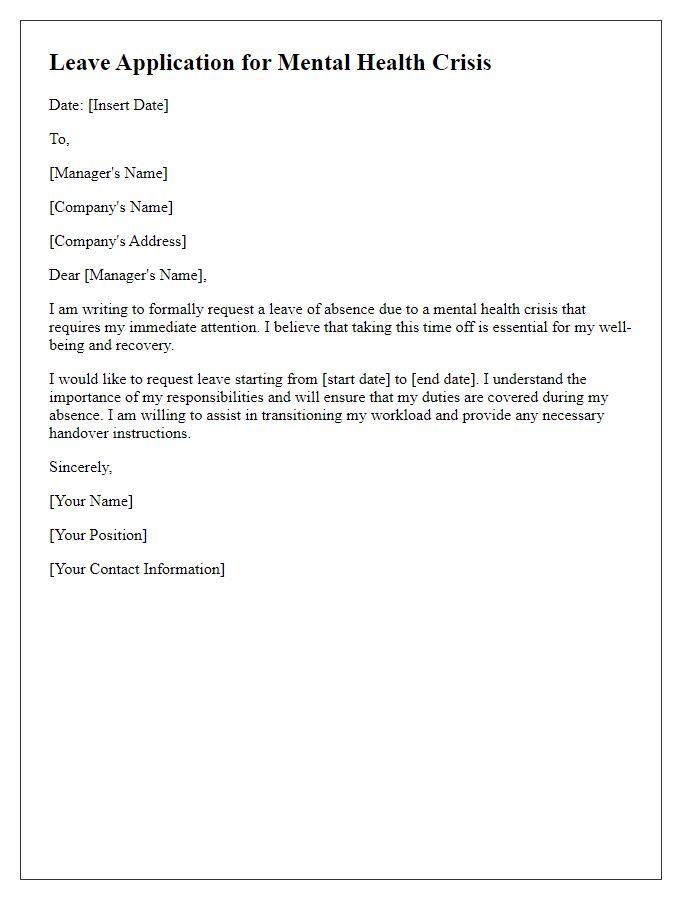In today's fast-paced world, unexpected situations can arise at any moment, making it essential to know how to communicate effectively, especially when requesting emergency leave. Crafting a well-structured letter can help convey your situation respectfully and professionally, ensuring that your employer understands the urgency of your request. By following the right template, you can express your needs clearly while maintaining a positive relationship with your workplace. Read on to discover a comprehensive guide that will simplify your emergency leave request process!

Subject line and salutation
An emergency leave request can arise from sudden situations such as medical emergencies or family crises. A proper subject line should be concise, indicating the urgency, for example: "Emergency Leave Request - [Your Name]." In the salutation, addressing the recipient appropriately is important, using titles such as "Dear [Manager's Name]" or "To Whom It May Concern," ensuring respect and professionalism in urgent circumstances.
Urgency and reason for leave
Emergency leave requests arise from unforeseen circumstances requiring immediate attention. Common urgent reasons include severe illness, hospitalization, or family emergencies involving a close relative. In such situations, clarity is crucial. Employees should provide specific details such as the individual's name (family member's medical emergency) and anticipated duration of absence (usually 1-2 weeks). Additionally, it is essential to mention immediate responsibilities affected, allowing for better coverage or handover plans, which can mitigate disruptions to workplace productivity. Clear communication helps management understand the urgency and facilitates a smoother leave approval process.
Duration and specific dates
Emergency leave requests require clear communication about the needed time away from work. Specific numbers for duration (e.g., three days, from October 15 to October 18) indicate the exact period of absence. Important factors include the reason for the emergency, such as personal health issues, family emergencies, or unforeseen events. Highlight the impact on work responsibilities and mention any arrangements made, like delegating tasks to colleagues. Providing contact information during the leave period ensures that important decisions can still be addressed, maintaining workflow continuity. Such clarity assists managers in planning for coverage and ensures transparency in communication.
Delegation of duties and contact information
During an emergency leave situation, it is crucial to ensure that responsibilities are delegated effectively to maintain workflow. Assign tasks to trusted colleagues who are familiar with ongoing projects and provide them with clear instructions. Share contact information for essential communication; include names, roles, and phone numbers for anyone involved in covering duties. Specify a temporary point of contact for urgent matters and ensure that all parties are updated on your absence. Maintain a document with deadlines, critical tasks, and necessary resources to facilitate a smooth transition during your leave.
Closing and appreciative language
The emergency leave request is often a vital communication in professional settings, highlighting urgent personal matters requiring immediate attention. Situations such as medical emergencies, family crises, or sudden personal issues justify the need for such leave. Ensuring clarity and urgency in your request will aid in a swift approval process. Moreover, expressing gratitude towards your employer for their understanding underscores professionalism and respect. Appreciation of the team's support during your absence can foster goodwill and maintain positive workplace relationships.













Comments